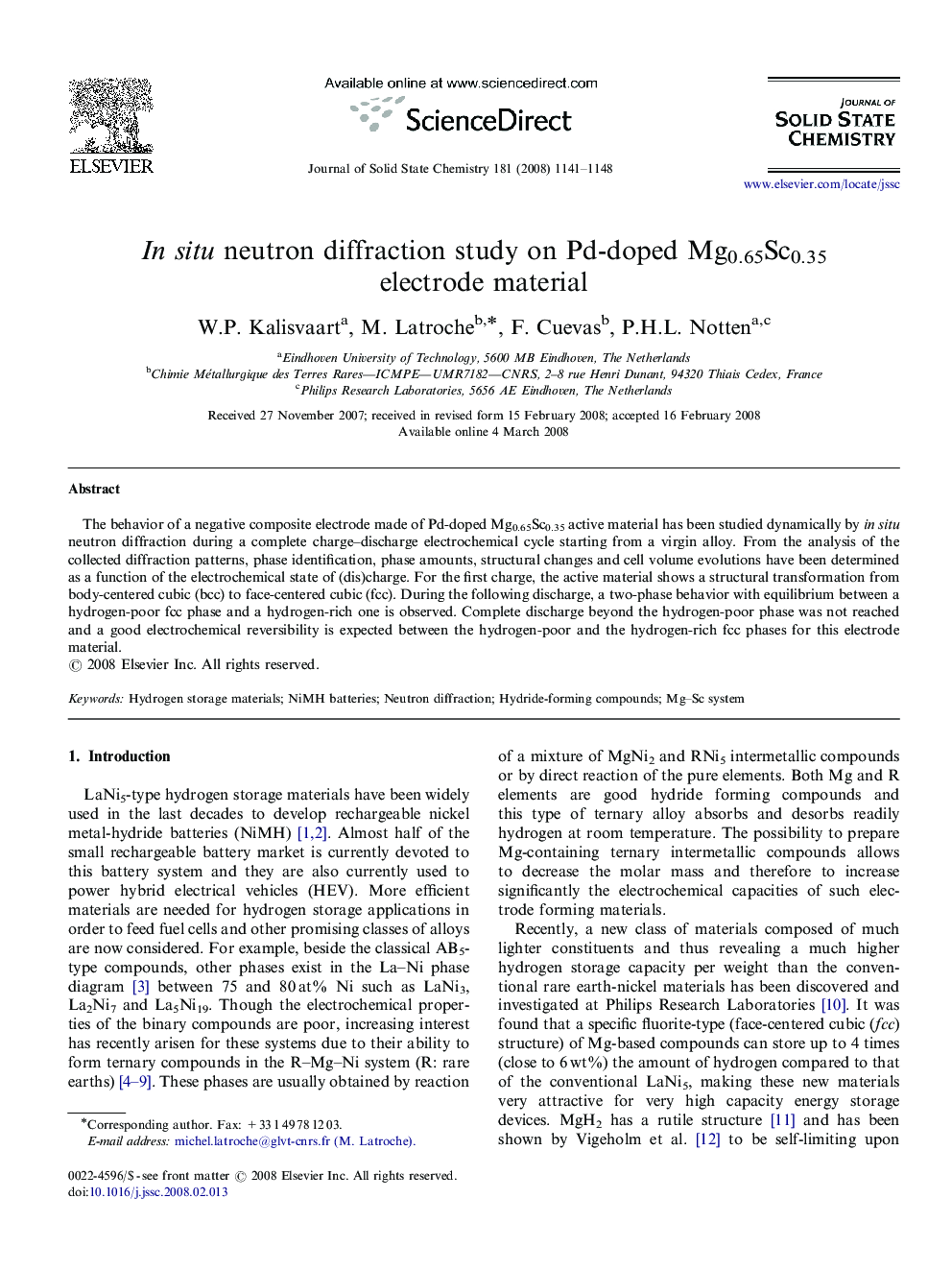| Article ID | Journal | Published Year | Pages | File Type |
|---|---|---|---|---|
| 1333034 | Journal of Solid State Chemistry | 2008 | 8 Pages |
The behavior of a negative composite electrode made of Pd-doped Mg0.65Sc0.35 active material has been studied dynamically by in situ neutron diffraction during a complete charge–discharge electrochemical cycle starting from a virgin alloy. From the analysis of the collected diffraction patterns, phase identification, phase amounts, structural changes and cell volume evolutions have been determined as a function of the electrochemical state of (dis)charge. For the first charge, the active material shows a structural transformation from body-centered cubic (bcc) to face-centered cubic (fcc). During the following discharge, a two-phase behavior with equilibrium between a hydrogen-poor fcc phase and a hydrogen-rich one is observed. Complete discharge beyond the hydrogen-poor phase was not reached and a good electrochemical reversibility is expected between the hydrogen-poor and the hydrogen-rich fcc phases for this electrode material.
Graphical abstract2D projection of the neutron diffraction pattern intensities as function of time during electrochemical charge of Pd-doped Mg0.65Sc0.35 active material showing the progressive transformation from bcc to fcc.Figure optionsDownload full-size imageDownload as PowerPoint slide
